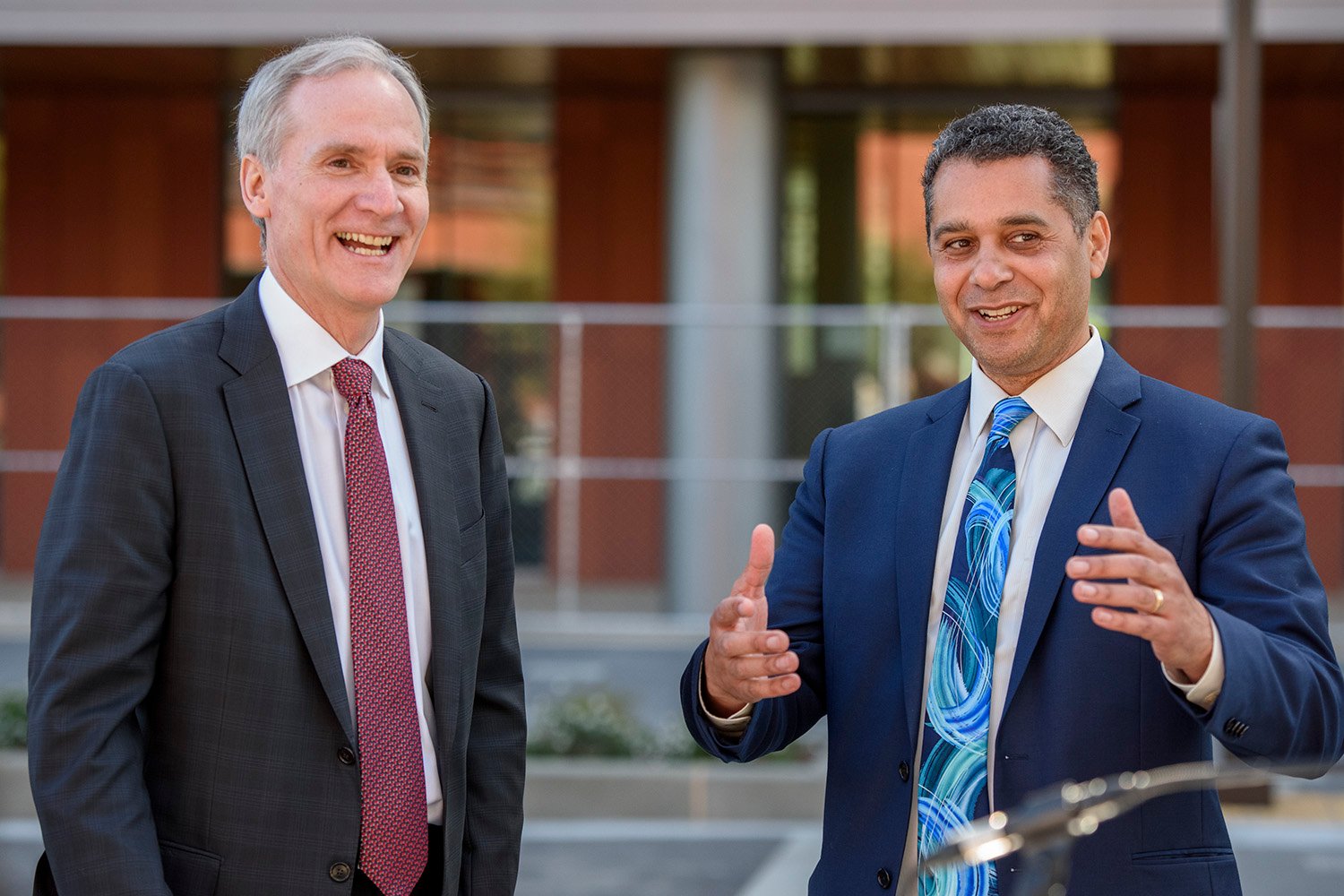Stanford officially opened its Redwood City campus — which will house 2,700 employees and three of the University’s eight vice presidents — at a ribbon-cutting ceremony on Thursday. The 35-acre property was developed to centralize the operations of certain non-academic University departments that were previously “scattered in various locations on and off campus.”
Thursday’s opening ceremony was the culmination of planning and construction dating back to 2005, when Stanford purchased the land. Construction of the campus — including four office buildings — began in 2017.
The first building to open, Cardinal Hall, was the stage for the ribbon-cutting ceremony and will house Business Affairs and University Human Resources (HR) employees. Seventy Business Affairs staffers began moving into the building this week. They will be followed by 130 HR staffers next week, with University IT workers moving into the building through April.
The Stanford Recreation & Wellness Center for Stanford affiliates also opened on Thursday, and The Cardinal Cafe on Cardinal Hall’s first floor began serving customers.
While three of the Redwood City campus’ four office buildings are still under construction, all four scissor-wielding leaders at Thursday’s event cut the ribbon at Cardinal Hall in unison.
Redwood City, San Mateo County and Stanford representatives joined Stanford President Marc Tessier-Lavigne, Provost Drell, Redwood City Mayor Ian Bain and Vice Mayor Diane Howard at the ceremony as they celebrated the new campus.
Though the project represents a collaboration between Stanford and Redwood City leadership, some students have expressed concern over potential gentrification as University staffers begin to move into the city and surrounding area. Stanford announced on Feb. 14, 2018 that it would donate $1 million to the Saint Francis Center to assist in the purchase of 25 housing units for residents at risk of displacement in downtown Redwood City.
“We welcome Stanford with open arms,” Bain told Stanford News, adding that he hopes for University affiliates to “embrace” the city’s restaurants, parks, culture and nightlife. “I hope all of the Stanford employees who work here learn to love Redwood City as much as I do.”
Stanford is projected to be Redwood City’s third-largest employer by the time the new campus is fully operational. In addition to providing Stanford affiliates with four office buildings, a wellness center, a parking garage and — beginning in fall 2019 — a child care center, the Redwood City campus will contain 2.4 acres of outdoor space open to community visitors.
“We want to be the best neighbors we can possibly be,” Stanford’s chief external relations officer Martin Shell told Stanford News in light of Thursday’s opening.
“And that includes offering the community some wonderful benefits,” he added, mentioning Stanford’s funding of street improvements in local neighborhoods, as well as University support of the Redwood City Education Foundation. He also pointed out Stanford’s provision of educational classes in conjunction with the Graduate School of Business Executive Education Program.
Stanford’s new campus project will provide “more than $15 million in public benefits to Redwood City,” according to its website. The University lists bike lane improvements, water tank expansion for Redwood City neighborhoods and support for arts events at the city’s Courthouse Square as further examples of these benefits.
It remains to be seen whether gentrification concerns will persist as Stanford’s new campus becomes a city staple.
Workers from Stanford Libraries, External Relations, Business Affairs and Residential and Dining Enterprises (R&DE) are set to move into University Hall between April and May, while Stanford’s School of Medicine will have Discovery Hall to itself when the office building opens by late May.
Academy Hall, the last of the four office buildings set to open, will begin receiving staff from Land, Buildings & Real Estate in late June, and they will be joined by staff from Stanford Libraries, Business Affairs, the Office of Technology Licensing and the Office of Continuing Studies.
Contact Holden Foreman at hs4man21 ‘at’ stanford.edu.
